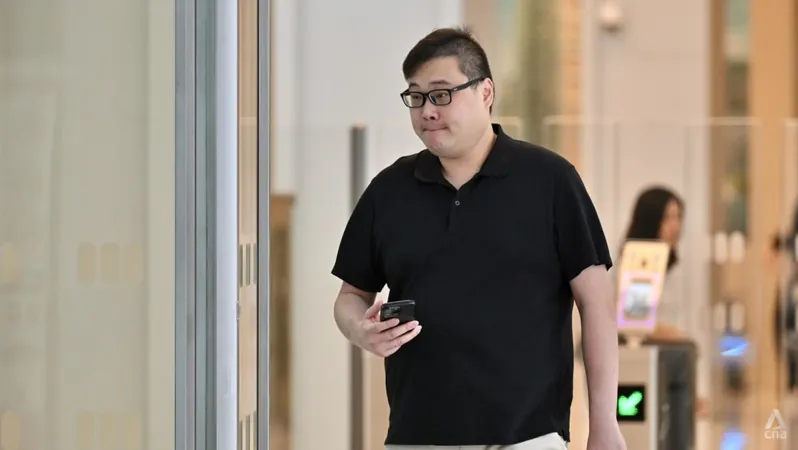
Revolutionizing Antibiotic Discovery: How AI is Bringing Back Ancient Medicines
2025-07-15
Author: Daniel
AI vs. the Antibiotic Resistance Crisis
Antibiotic-resistant infections are looming as one of the gravest threats to global health, according to Dr. César de la Fuente, a leading researcher from the University of Pennsylvania. In his compelling keynote at Technology Networks' Innovations in Disease Modeling 2025 event, he unveiled groundbreaking methods leveraging artificial intelligence (AI) to innovate antibiotic discovery by diving into the depths of the human proteome, ancient genomes, and even extinct organisms.
Every year, bacterial infections account for a staggering five million deaths, and projections suggest this figure could double by 2050, potentially eclipsing cancer fatalities.
Transforming Biology into Data: The AI Approach
Traditional antibiotic discovery methods are painfully slow and prohibitively expensive, predominantly based on trial and error. Dr. de la Fuente proposes a revolutionary perspective: "Why not think of biology as a treasure trove of information, akin to code, which can be navigated using advanced algorithms to uncover hidden molecules?"
Harnessing Peptides: Nature's Powerhouses
At the core of this innovative approach lie peptides, which are short chains of amino acids and nature’s simplest nanomachines endowed with various biological functions. These molecules are ideal candidates for AI exploration due to their inherent diversity and adaptability. By employing AI algorithms to analyze an extensive 'sequence space' of peptides, Dr. de la Fuente’s team seeks out candidates with antimicrobial, anticancer, or immune-modulating qualities.
Digging into the Past: Uncovering Ancient Antibiotics
Utilizing AI tools inspired by speech and image recognition, the researchers conducted an unprecedented study of the human proteome, decoding over 42,000 proteins to locate hidden antimicrobial peptides. The results were astounding—thousands of new antibiotic candidates emerged, with an impressive 60% validated in laboratory tests.
Taking it a step further, the team cast a wide net to incorporate ancient relatives like Neanderthals. They pioneered a process termed "molecular de-extinction," reviving ancient peptide sequences through AI and synthetic chemistry to test their effectiveness against modern pathogens in mice. One standout molecule, "Neanderthalin," exhibited remarkable activity, rivaling last-resort antibiotics like polymyxin B.
APEX and AI: Unleashing Ancient Biochemistry
To broaden their search across all extinct organisms, the team developed APEX, a bespoke AI model adept at predicting peptide functions based purely on their sequences. This revolutionary approach uncovered antibiotic candidates from ancient beings, including elephants and sea cows. Recently, they introduced APEX-GO, a generative AI tool that enhances peptide designs, boasting an impressive 85% hit rate in laboratory tests and a 72% success rate for improving antibiotic potency. Dr. de la Fuente remarked, "This opens new avenues for molecule optimization."
Creating Multimodal Therapies: Peptides That Do More
The lab also rolled out APEX-DUO, an advanced AI system capable of designing peptides that serve multiple functions, such as penetrating human cells while effectively neutralizing intracellular bacteria. Dr. de la Fuente envisions future medicines engineered to combine antibacterial and anti-inflammatory properties.
Navigating Ethics and Patents in Drug Innovation
With great power comes ethical responsibility. Dr. de la Fuente emphasizes the importance of collaborating with bioethicists to ensure responsible innovation, particularly in steering clear of synthesizing molecules resembling bioweapons or biotoxins. The project also raises intriguing legal dilemmas regarding the patentability of ancient molecules that were once natural but now lie dormant within the annals of extinction.
The Future of Drug Discovery: AI-Led Innovations
Dr. de la Fuente estimates that their pioneering work has effectively fast-tracked antibiotic research by a staggering one million years, equating to the labor of about 100,000 PhD students over six years. His AI-first strategy is expanding beyond antibiotics, making waves in neuroscience, cancer research, agriculture, and food science.
Reflecting on the early skepticism faced by his team, Dr. de la Fuente stated, "People thought we were on the lunatic fringe... But when you passionately believe in something, you can manifest what seems impossible into reality."

 Brasil (PT)
Brasil (PT)
 Canada (EN)
Canada (EN)
 Chile (ES)
Chile (ES)
 Česko (CS)
Česko (CS)
 대한민국 (KO)
대한민국 (KO)
 España (ES)
España (ES)
 France (FR)
France (FR)
 Hong Kong (EN)
Hong Kong (EN)
 Italia (IT)
Italia (IT)
 日本 (JA)
日本 (JA)
 Magyarország (HU)
Magyarország (HU)
 Norge (NO)
Norge (NO)
 Polska (PL)
Polska (PL)
 Schweiz (DE)
Schweiz (DE)
 Singapore (EN)
Singapore (EN)
 Sverige (SV)
Sverige (SV)
 Suomi (FI)
Suomi (FI)
 Türkiye (TR)
Türkiye (TR)
 الإمارات العربية المتحدة (AR)
الإمارات العربية المتحدة (AR)